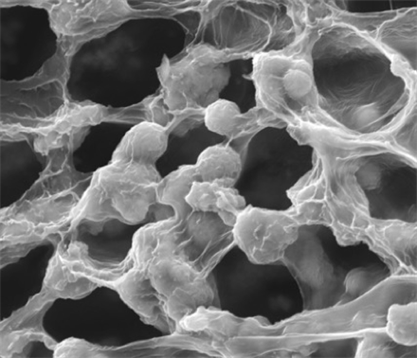 The research of Dr. Akhilesh Gaharwar, assistant professor in the Department of Biomedical Engineering at Texas A&M University, has been featured in Advanced Materials for his work in developing new methods to form synthetic gel-like environments for biomedical applications.
The research of Dr. Akhilesh Gaharwar, assistant professor in the Department of Biomedical Engineering at Texas A&M University, has been featured in Advanced Materials for his work in developing new methods to form synthetic gel-like environments for biomedical applications.
The new method has the potential to help many different areas within the biomedical field, including tissue engineering, regenerative medicine and cell/therapeutic delivery. The method uses chemical conjugation of two-dimensional (2-D) molybdenum disulfide (MoS2), an inorganic nanomaterial, with a polymeric binder in order to create high-water content gels.
“This new gelation approach utilizes the planar and edge atomic defects available on the MoS2 surface to form mechanically strong and resilient hydrogels,” said Gaharwar. “By modulating the number of atomic defects on the MoS2 surface, physical and chemical properties of the gel can be tailored for biomedical applications.”
The resulting material is porous in nature and is utilized to encapsulate, as well as deliver cells in order to facilitate regeneration of tissues that have been damaged. One of the many benefits of the process is that the material is cell friendly. The new process does not involve the use of harsh chemicals, thermal agitation or UV light. As a result, the outcome is a non-cytotoxic and safe method of encapsulating living stem cells and proteins.
To read more about Gaharwar’s article, visit the website.